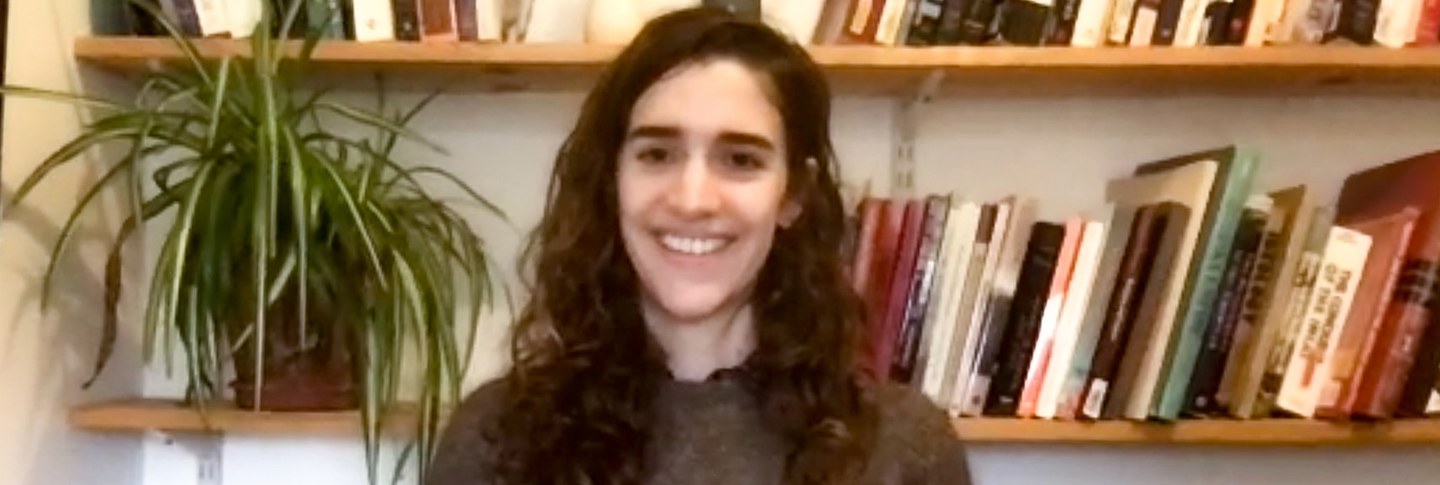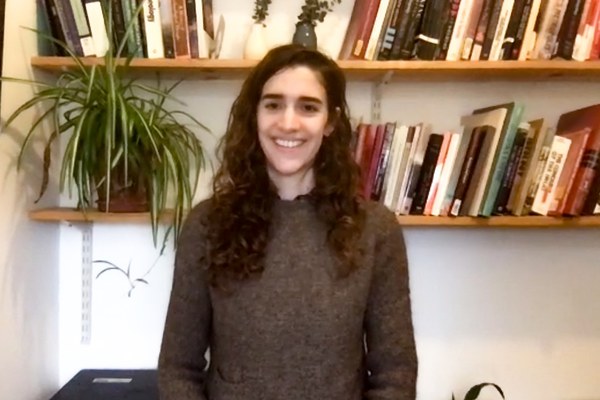Beth Grávalos, PhD candidate at the University of Illinois at Chicago and scientific affiliate at the Field Museum, is a junior fellow in Pre-Columbian Studies. Her research report, “Tracking Recuay Traditions: Prehispanic Craft Learning and Social Networks in Highland Ancash, Peru,” described the ceramic technologies and economies of the Early Intermediate period and Middle Horizon in highland Ancash.
Q&A with Beth Grávalos
Who were the Recuay, and why are their ceramics important?
I’m looking at ceramics from Jecosh, a pre-Hispanic settlement in highland Ancash, where ancient Recuay polities were situated. These independent polities formed around 1 CE following the collapse of the Chavín religious phenomenon and flourished until at least 700 CE. They are known for ornate hand-modeled ceramics made from a white clay called kaolin. Because Recuay communities had no known writing system, archaeologists use their material culture to infer social and political life—and kaolin ceramics are key. For example, many Recuay effigy vessels (called pacchas) depict people, such as a male personage surrounded by community members feasting and drinking. This is one reason we believe Recuay polities were independently headed by a lineage founder or chief.
Fancy ceramics provide important iconographic clues about past life, but we have a poor understanding of the economic and social practices surrounding pottery production more broadly. We don’t know where in the landscape Recuay potters found kaolin or who controlled raw material resources. Who made the pottery and in what conditions? Was knowledge about pottery production shared or restricted? Also, Recuay people made plain ceramics, which haven’t been studied closely, for everyday activities like cooking and eating. My research examines both fancy and everyday ceramics. In doing so, I hope to better understand the organization of pottery making and its relation to the constitution of Recuay community, identity, and power.
What do your techniques of compositional analysis reveal about the ceramics at Jecosh?
I use geochemistry and mineralogy to evaluate a ceramic vessel’s raw materials. With laser ablation inductively coupled plasma mass spectrometry (LA-ICP-MS), I characterize the clay geochemistry of the ceramics and compare it to raw clays I collected in the region to see if their geochemical signatures are similar, which helps determine the possible provenance of the ceramics. I also use thin section petrography to identify any inclusions in the clay, such as volcanic rock, by looking at a cross-section of a ceramic through a polarized light microscope. Thin section petrography also allows me to observe the granulometry, or shape and size, of the minerals, which helps me determine if, say, the potter intentionally crushed and added volcanic rock to temper the clay paste. How the minerals are aligned might also tell me if this potter used, for example, the coil building method to construct the vessel. Together, these techniques help me understand the composition and possible provenance of the clay as well as ceramic production practices.
I’ve found so far that at least two types of plain cooking ceramics used by people at Jecosh came from far away. In one case, petrography shows the raw materials for those ceramics are not local to highland Ancash and may have come from the coast, or at least the mid-coastal valleys, fifty or sixty kilometers from Jecosh. Finding that people weren’t just trading ornate kaolin wares is exciting because it makes us wonder why people traded plainwares—perhaps they transported goods people wouldn’t have had immediate access to in the Highlands, like maize, cotton, or fish. Compositional analysis adds to our understanding of the kaolin wares, too: my geochemical analysis demonstrates there were at least two different spheres of trade and distribution of kaolin finewares in highland Ancash, with Jecosh engaged in the southern trade network but not the northern one.
Why is it important to connect the material and location?
My results suggest some kind of exchange relationship involving plainwares at Jecosh. This finding compels us to reconsider long-held assumptions in archaeology. We tend to assume finewares were nonlocal and therefore traded longer distances than plainwares, an idea that focuses on the elite communities who procured them. Conversely, we tend to assume plain pots were made at or near the site where they were found. But by studying plainwares from modest households, we see that nonelites might also have been engaged in long-distance relationships. Connecting raw materials to their location, especially for objects like plainwares, sheds light on different kinds of people in the past, not just elite populations who could obtain fancy ceramics or other trade goods.
I am proud of the work I’ve done in Peru to track these ancient economic relationships. Alongside colleagues Emily Sharp and Denisse Herrera Rondan, I codesigned and directed excavations at Jecosh. We collaborated with Jecosh’s descendant community and Peruvian archaeology undergraduates. After excavations and materials analysis, our team cocurated a temporary museum exhibit with the descendant community in the city of Huaraz, sharing our findings with the public and emphasizing the protection and preservation of cultural patrimony. Sharing our findings in this way helps people connect their lived experiences with those of their ancestors and Peru’s broader cultural heritage.
May Wang is postgraduate writing and reporting fellow at Dumbarton Oaks. Photo by Richard Tong, postgraduate digital media fellow.

